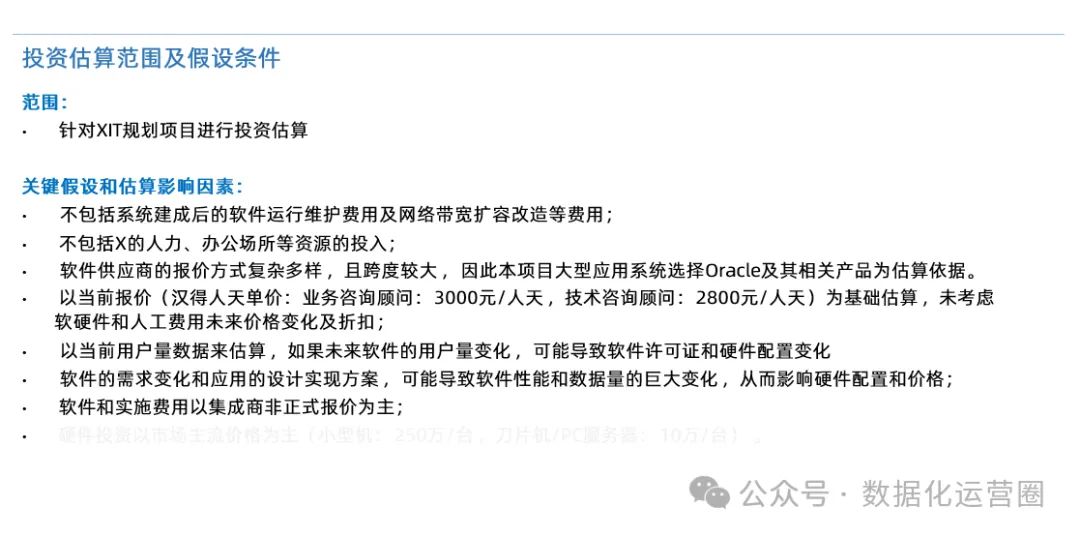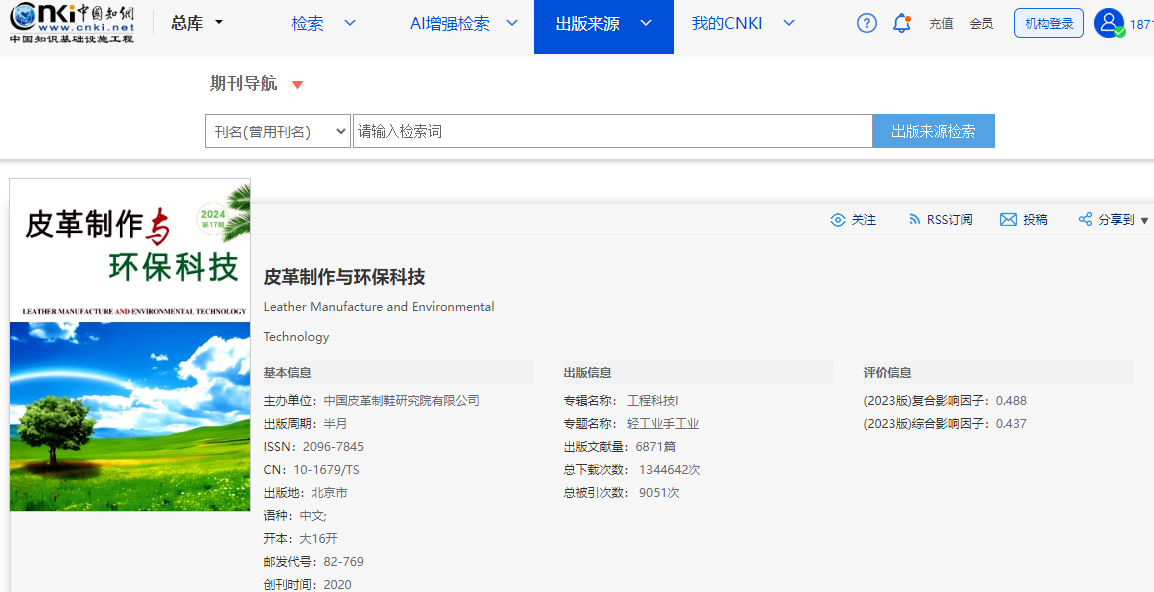理论课:C2W4.Word Embeddings with Neural Networks
文章目录
- Training the CBOW model
- Forward propagation
- Initialization of the weights and biases
- Training example
- Values of the hidden layer
- Values of the output layer
- Cross-entropy loss
- Backpropagation
- Gradient descent
- Extracting word embedding vectors
理论课: C2W4.Word Embeddings with Neural Networks
Training the CBOW model
先根据网络构架搞清楚输出、隐藏层、输出维度

图中描述的是一个简单的神经网络模型,通常用于处理词嵌入(Word Embedding)任务,如连续词袋模型(Continuous Bag of Words, CBOW)。这个模型由输入层、隐藏层和输出层组成。下面是每个层和相关操作的维度解释:
-
输入层 (Input layer):
- 维度: ( N × V ) (N \times V) (N×V)
- 描述:输入层接收一个词的one-hot编码,其中(N)是词汇表的大小, ( V ) (V) (V)是词汇表中每个词的向量维度(即one-hot编码的长度)。
-
权重矩阵 W1 (Weight matrix W1):
- 维度: ( N × V ) (N \times V) (N×V)到$ ( N × 1 ) (N \times 1) (N×1)
- 描述:这是从输入层到隐藏层的权重矩阵。每个词的one-hot编码通过这个权重矩阵转换为隐藏层的激活值。
-
偏置向量 b1 (Bias vector b1):
- 维度: ( N × 1 ) (N \times 1) (N×1)
- 描述:这是加在隐藏层激活值上的偏置项。
-
隐藏层 (Hidden layer):
- 维度: ( N × 1 ) (N \times 1) (N×1)
- 描述:隐藏层的激活值由输入层的加权和加上偏置后通过激活函数(如ReLU)计算得到。
-
激活函数 ReLU (Activation function ReLU):
- 描述:隐藏层的激活函数,通常用于引入非线性,帮助模型学习复杂的模式。
-
权重矩阵 W2 (Weight matrix W2):
- 维度: ( V × N ) (V \times N) (V×N)
- 描述:这是从隐藏层到输出层的权重矩阵。它将隐藏层的激活值转换为输出层的预测值。
-
偏置向量 b2 (Bias vector b2):
- 维度: ( V × 1 ) (V \times 1) (V×1)
- 描述:这是加在输出层预测值上的偏置项。
-
输出层 (Output layer):
- 维度: ( V × 1 ) (V \times 1) (V×1)
- 描述:输出层的值是模型对每个词的预测概率,通常通过softmax函数转换为概率分布。
-
softmax 函数:
- 描述:softmax函数用于将输出层的线性预测值转换为概率分布,使得所有输出概率的和为1。
-
预测值 y ^ \hat{y} y^ (Predicted value y ^ \hat{y} y^):
- 描述:模型的最终输出,表示为每个词的概率。
这里将
N
N
N 设为 3。
N
N
N是 CBOW 模型的一个超参数,代表单词嵌入向量的大小以及隐藏层的大小。
V
V
V这里为5,是词表大小。
# Define the size of the word embedding vectors and save it in the variable 'N'
N = 3
# Define V. Remember this was the size of the vocabulary in the previous lecture notebooks
V = 5
Forward propagation
Initialization of the weights and biases
在开始训练CBOW 之前,需要用随机值初始化权重矩阵和偏置向量。正常是需要使用numpy.random.rand来完成该操作,这里直接填充好(大家实验结果才会一致,也可以用随机种子完成):
# Define first matrix of weights
W1 = np.array([[ 0.41687358, 0.08854191, -0.23495225, 0.28320538, 0.41800106],
[ 0.32735501, 0.22795148, -0.23951958, 0.4117634 , -0.23924344],
[ 0.26637602, -0.23846886, -0.37770863, -0.11399446, 0.34008124]])
# Define second matrix of weights
W2 = np.array([[-0.22182064, -0.43008631, 0.13310965],
[ 0.08476603, 0.08123194, 0.1772054 ],
[ 0.1871551 , -0.06107263, -0.1790735 ],
[ 0.07055222, -0.02015138, 0.36107434],
[ 0.33480474, -0.39423389, -0.43959196]])
# Define first vector of biases
b1 = np.array([[ 0.09688219],
[ 0.29239497],
[-0.27364426]])
# Define second vector of biases
b2 = np.array([[ 0.0352008 ],
[-0.36393384],
[-0.12775555],
[-0.34802326],
[-0.07017815]])
检查参数的维度:
print(f'V (vocabulary size): {V}')
print(f'N (embedding size / size of the hidden layer): {N}')
print(f'size of W1: {W1.shape} (NxV)')
print(f'size of b1: {b1.shape} (Nx1)')
print(f'size of W2: {W2.shape} (VxN)')
print(f'size of b2: {b2.shape} (Vx1)')
结果:
V (vocabulary size): 5
N (embedding size / size of the hidden layer): 3
size of W1: (3, 5) (NxV)
size of b1: (3, 1) (Nx1)
size of W2: (5, 3) (VxN)
size of b2: (5, 1) (Vx1)
然后使用Part1中创建的一系列函数完成相关数据预处理操作:
# Define the tokenized version of the corpus
words = ['i', 'am', 'happy', 'because', 'i', 'am', 'learning']
# Get 'word2Ind' and 'Ind2word' dictionaries for the tokenized corpus
word2Ind, Ind2word = get_dict(words)
# Define the 'get_windows' function as seen in a previous notebook
def get_windows(words, C):
i = C
while i < len(words) - C:
center_word = words[i]
context_words = words[(i - C):i] + words[(i+1):(i+C+1)]
yield context_words, center_word
i += 1
# Define the 'word_to_one_hot_vector' function as seen in a previous notebook
def word_to_one_hot_vector(word, word2Ind, V):
one_hot_vector = np.zeros(V)
one_hot_vector[word2Ind[word]] = 1
return one_hot_vector
# Define the 'context_words_to_vector' function as seen in a previous notebook
def context_words_to_vector(context_words, word2Ind, V):
context_words_vectors = [word_to_one_hot_vector(w, word2Ind, V) for w in context_words]
context_words_vectors = np.mean(context_words_vectors, axis=0)
return context_words_vectors
# Define the generator function 'get_training_example' as seen in a previous notebook
def get_training_example(words, C, word2Ind, V):
for context_words, center_word in get_windows(words, C):
yield context_words_to_vector(context_words, word2Ind, V), word_to_one_hot_vector(center_word, word2Ind, V)
Training example
# Save generator object in the 'training_examples' variable with the desired arguments
training_examples = get_training_example(words, 2, word2Ind, V)
使用 yield 关键字的 get_training_examples 被称为生成器。运行时,它会生成一个迭代器(iterator),迭代器是一种特殊类型的对象…你可以对它进行迭代(例如使用 for 循环),以检索函数生成的连续值。
在这种情况下,get_training_examples会生成训练示例,对training_examples进行迭代会返回连续的训练示例。
下面取出生成器的第一个值:
# Get first values from generator
x_array, y_array = next(training_examples)
next 是另一个特殊的关键字,用于从迭代器中获取下一个可用值。上面的代码你会得到第一个值,也就是第一个训练示例。如果再次运行这个单元,就会得到下一个值,依此类推,直到迭代器返回的值用完为止。
这里使用 next 是因为只进行一次迭代训练,如果在多个迭代中进行完整的训练,需要使用常规的 for 循环以提供训练示例的迭代器。
打印提取到的向量:
# Print context words vector
x_array
结果:array([0.25, 0.25, 0. , 0.5 , 0. ])
# Print one hot vector of center word
y_array
结果:array([0., 0., 1., 0., 0.])
现在将这些向量转换为矩阵(或二维数组),以便能够在正确类型的对象上执行矩阵乘法
# Copy vector
x = x_array.copy()
# Reshape it
x.shape = (V, 1)
# Print it
print(f'x:\n{x}\n')
# Copy vector
y = y_array.copy()
# Reshape it
y.shape = (V, 1)
# Print it
print(f'y:\n{y}')
结果:
x:
[[0.25]
[0.25]
[0. ]
[0.5 ]
[0. ]]
y:
[[0.]
[0.]
[1.]
[0.]
[0.]]
定义激活函数:
# Define the 'relu' function as seen in the previous lecture notebook
def relu(z):
result = z.copy()
result[result < 0] = 0
return result
# Define the 'softmax' function as seen in the previous lecture notebook
def softmax(z):
e_z = np.exp(z)
sum_e_z = np.sum(e_z)
return e_z / sum_e_z
Values of the hidden layer
初始化完毕前向传播所需的所有变量,可以使用下面的公式计算隐藏层的值:
z
1
=
W
1
x
+
b
1
h
=
R
e
L
U
(
z
1
)
\begin{align} \mathbf{z_1} = \mathbf{W_1}\mathbf{x} + \mathbf{b_1} \tag{1} \\ \mathbf{h} = \mathrm{ReLU}(\mathbf{z_1}) \tag{2} \\ \end{align}
z1=W1x+b1h=ReLU(z1)(1)(2)
根据公式1写代码:
# Compute z1 (values of first hidden layer before applying the ReLU function)
z1 = np.dot(W1, x) + b1
# Print z1
z1
结果:
array([[ 0.36483875],
[ 0.63710329],
[-0.3236647 ]])
根据公式2写代码:
# Compute h (z1 after applying ReLU function)
h = relu(z1)
# Print h
h
结果:
array([[0.36483875],
[0.63710329],
[0. ]])
注意观察,上面是ReLU的结果。
Values of the output layer
以下是计算输出层(以向量
y
^
\hat{y}
y^表示)值所需的公式:
z
2
=
W
2
h
+
b
2
y
^
=
s
o
f
t
m
a
x
(
z
2
)
\begin{align} \mathbf{z_2} &= \mathbf{W_2}\mathbf{h} + \mathbf{b_2} \tag{3} \\ \mathbf{\hat y} &= \mathrm{softmax}(\mathbf{z_2}) \tag{4} \\ \end{align}
z2y^=W2h+b2=softmax(z2)(3)(4)
根据公式3写代码:
# Compute z2 (values of the output layer before applying the softmax function)
z2 = np.dot(W2, h) + b2
# Print z2
z2
结果:
array([[-0.31973737],
[-0.28125477],
[-0.09838369],
[-0.33512159],
[-0.19919612]])
注意其维度是:
(
V
×
1
)
(V \times 1)
(V×1)
根据公式4计算输出:
# Compute y_hat (z2 after applying softmax function)
y_hat = softmax(z2)
# Print y_hat
y_hat
结果:
array([[0.18519074],
[0.19245626],
[0.23107446],
[0.18236353],
[0.20891502]])
思考:得到了输出 y ^ \hat{y} y^,如何计算其预测的单词 1?
Cross-entropy loss
有了预测结果,就可以计算Cross-entropy损失来决定预测的准确度有多少。
这里因为只有一个训练样本,而非一个batch的训练样本,因此用lost,不是cost。当然,cost是lost的一般形式。
再次打印预测结果和真实值:
# Print prediction
y_hat
结果:
array([[0.18519074],
[0.19245626],
[0.23107446],
[0.18236353],
[0.20891502]])
# Print target value
y
结果:
array([[0.],
[0.],
[1.],
[0.],
[0.]])
交叉熵损失计算公式为:
J
=
−
∑
k
=
1
V
y
k
log
y
^
k
(6)
J=-\sum\limits_{k=1}^{V}y_k\log{\hat{y}_k} \tag{6}
J=−k=1∑Vyklogy^k(6)
对应的代码为:
def cross_entropy_loss(y_predicted, y_actual):
# Fill the loss variable with your code
loss = np.sum(-np.log(y_hat)*y)
return loss
测试:
# Print value of cross entropy loss for prediction and target value
cross_entropy_loss(y_hat, y)
结果:1.4650152923611106
这个结果不好也不坏,模型还没学习到任何信息,需要继续进行反向传播
Backpropagation
根据网络构架,反向传播用到的公式为:
∂
J
∂
W
1
=
R
e
L
U
(
W
2
⊤
(
y
^
−
y
)
)
x
⊤
∂
J
∂
W
2
=
(
y
^
−
y
)
h
⊤
∂
J
∂
b
1
=
R
e
L
U
(
W
2
⊤
(
y
^
−
y
)
)
∂
J
∂
b
2
=
y
^
−
y
\begin{align} \frac{\partial J}{\partial \mathbf{W_1}} &= \rm{ReLU}\left ( \mathbf{W_2^\top} (\mathbf{\hat{y}} - \mathbf{y})\right )\mathbf{x}^\top \tag{7}\\ \frac{\partial J}{\partial \mathbf{W_2}} &= (\mathbf{\hat{y}} - \mathbf{y})\mathbf{h^\top} \tag{8}\\ \frac{\partial J}{\partial \mathbf{b_1}} &= \rm{ReLU}\left ( \mathbf{W_2^\top} (\mathbf{\hat{y}} - \mathbf{y})\right ) \tag{9}\\ \frac{\partial J}{\partial \mathbf{b_2}} &= \mathbf{\hat{y}} - \mathbf{y} \tag{10} \end{align}
∂W1∂J∂W2∂J∂b1∂J∂b2∂J=ReLU(W2⊤(y^−y))x⊤=(y^−y)h⊤=ReLU(W2⊤(y^−y))=y^−y(7)(8)(9)(10)
以上公式是针对单个样本的,batch操作会更复杂,先计算公式10
# Compute vector with partial derivatives of loss function with respect to b2
grad_b2 = y_hat - y
# Print this vector
grad_b2
结果:
array([[ 0.18519074],
[ 0.19245626],
[-0.76892554],
[ 0.18236353],
[ 0.20891502]])
然后根据公式8写代码:
# Compute matrix with partial derivatives of loss function with respect to W2
grad_W2 = np.dot(y_hat - y, h.T)
# Print matrix
grad_W2
结果:
array([[ 0.06756476, 0.11798563, 0. ],
[ 0.0702155 , 0.12261452, 0. ],
[-0.28053384, -0.48988499, -0. ],
[ 0.06653328, 0.1161844 , 0. ],
[ 0.07622029, 0.13310045, 0. ]])
按公式9写代码:
# Compute vector with partial derivatives of loss function with respect to b1
grad_b1 = relu(np.dot(W2.T, y_hat - y))
# Print vector
grad_b1
结果:
array([[0. ],
[0. ],
[0.17045858]])
最后计算公式7:
# Compute matrix with partial derivatives of loss function with respect to W1
grad_W1 = np.dot(relu(np.dot(W2.T, y_hat - y)), x.T)
# Print matrix
grad_W1
结果:
array([[0. , 0. , 0. , 0. , 0. ],
[0. , 0. , 0. , 0. , 0. ],
[0.04261464, 0.04261464, 0. , 0.08522929, 0. ]])
再次确认结果的维度:
print(f'V (vocabulary size): {V}')
print(f'N (embedding size / size of the hidden layer): {N}')
print(f'size of grad_W1: {grad_W1.shape} (NxV)')
print(f'size of grad_b1: {grad_b1.shape} (Nx1)')
print(f'size of grad_W2: {grad_W2.shape} (VxN)')
print(f'size of grad_b2: {grad_b2.shape} (Vx1)')
结果:
V (vocabulary size): 5
N (embedding size / size of the hidden layer): 3
size of grad_W1: (3, 5) (NxV)
size of grad_b1: (3, 1) (Nx1)
size of grad_W2: (5, 3) (VxN)
size of grad_b2: (5, 1) (Vx1)
Gradient descent
在梯度下降阶段,可使用下面的公式从原始矩阵和向量中减去
α
\alpha
α 乘以梯度来更新权重和偏置。
W
1
:
=
W
1
−
α
∂
J
∂
W
1
W
2
:
=
W
2
−
α
∂
J
∂
W
2
b
1
:
=
b
1
−
α
∂
J
∂
b
1
b
2
:
=
b
2
−
α
∂
J
∂
b
2
\begin{align} \mathbf{W_1} &:= \mathbf{W_1} - \alpha \frac{\partial J}{\partial \mathbf{W_1}} \tag{11}\\ \mathbf{W_2} &:= \mathbf{W_2} - \alpha \frac{\partial J}{\partial \mathbf{W_2}} \tag{12}\\ \mathbf{b_1} &:= \mathbf{b_1} - \alpha \frac{\partial J}{\partial \mathbf{b_1}} \tag{13}\\ \mathbf{b_2} &:= \mathbf{b_2} - \alpha \frac{\partial J}{\partial \mathbf{b_2}} \tag{14}\\ \end{align}
W1W2b1b2:=W1−α∂W1∂J:=W2−α∂W2∂J:=b1−α∂b1∂J:=b2−α∂b2∂J(11)(12)(13)(14)
先给超参数一个初始值:
# Define alpha
alpha = 0.03
先按公式11计算:
# Compute updated W1
W1_new = W1 - alpha * grad_W1
比较更新前后的值:
print('old value of W1:')
print(W1)
print()
print('new value of W1:')
print(W1_new)
结果:
old value of W1:
[[ 0.41687358 0.08854191 -0.23495225 0.28320538 0.41800106]
[ 0.32735501 0.22795148 -0.23951958 0.4117634 -0.23924344]
[ 0.26637602 -0.23846886 -0.37770863 -0.11399446 0.34008124]]
new value of W1:
[[ 0.41687358 0.08854191 -0.23495225 0.28320538 0.41800106]
[ 0.32735501 0.22795148 -0.23951958 0.4117634 -0.23924344]
[ 0.26509758 -0.2397473 -0.37770863 -0.11655134 0.34008124]]
根据公式12.13.14更新其他三个参数:
# Compute updated W2
W2_new = W2 - alpha * grad_W2
# Compute updated b1
b1_new = b1 - alpha * grad_b1
# Compute updated b2
b2_new = b2 - alpha * grad_b2
print('W2_new')
print(W2_new)
print()
print('b1_new')
print(b1_new)
print()
print('b2_new')
print(b2_new)
结果:
W2_new
[[-0.22384758 -0.43362588 0.13310965]
[ 0.08265956 0.0775535 0.1772054 ]
[ 0.19557112 -0.04637608 -0.1790735 ]
[ 0.06855622 -0.02363691 0.36107434]
[ 0.33251813 -0.3982269 -0.43959196]]
b1_new
[[ 0.09688219]
[ 0.29239497]
[-0.27875802]]
b2_new
[[ 0.02964508]
[-0.36970753]
[-0.10468778]
[-0.35349417]
[-0.0764456 ]]
Extracting word embedding vectors
开始前,把CBOW训练好的参数都重新给一次:
import numpy as np
from utils2 import get_dict
# Define the tokenized version of the corpus
words = ['i', 'am', 'happy', 'because', 'i', 'am', 'learning']
# Define V. Remember this is the size of the vocabulary
V = 5
# Get 'word2Ind' and 'Ind2word' dictionaries for the tokenized corpus
word2Ind, Ind2word = get_dict(words)
# Define first matrix of weights
W1 = np.array([[ 0.41687358, 0.08854191, -0.23495225, 0.28320538, 0.41800106],
[ 0.32735501, 0.22795148, -0.23951958, 0.4117634 , -0.23924344],
[ 0.26637602, -0.23846886, -0.37770863, -0.11399446, 0.34008124]])
# Define second matrix of weights
W2 = np.array([[-0.22182064, -0.43008631, 0.13310965],
[ 0.08476603, 0.08123194, 0.1772054 ],
[ 0.1871551 , -0.06107263, -0.1790735 ],
[ 0.07055222, -0.02015138, 0.36107434],
[ 0.33480474, -0.39423389, -0.43959196]])
# Define first vector of biases
b1 = np.array([[ 0.09688219],
[ 0.29239497],
[-0.27364426]])
# Define second vector of biases
b2 = np.array([[ 0.0352008 ],
[-0.36393384],
[-0.12775555],
[-0.34802326],
[-0.07017815]])
一共有三种提取词向量的方式。
Option 1: extract embedding vectors from W 1 \mathbf{W_1} W1
观察参数 W 1 \mathbf{W_1} W1,这个矩阵的第一列(3个元素)对应第一个单词的表征,第二列对应第二个单词,以此类推。我们把词库里面的单词按index打印出来:
# Print corresponding word for each index within vocabulary's range
for i in range(V):
print(Ind2word[i])
结果:
am
because
happy
i
learning
将参数
W
1
\mathbf{W_1}
W1对应单词的表征提取出来:
# Loop through each word of the vocabulary
for word in word2Ind:
# Extract the column corresponding to the index of the word in the vocabulary
word_embedding_vector = W1[:, word2Ind[word]]
# Print word alongside word embedding vector
print(f'{word}: {word_embedding_vector}')
结果:
am: [0.41687358 0.32735501 0.26637602]
because: [ 0.08854191 0.22795148 -0.23846886]
happy: [-0.23495225 -0.23951958 -0.37770863]
i: [ 0.28320538 0.4117634 -0.11399446]
learning: [ 0.41800106 -0.23924344 0.34008124]
Option 2: extract embedding vectors from W 2 \mathbf{W_2} W2
第二个选择是使用 W 2 \mathbf{W_2} W2的转置来提取单词的表征,先看 W 2 \mathbf{W_2} W2的转置:
# Print transposed W2
W2.T
结果:
array([[-0.22182064, 0.08476603, 0.1871551 , 0.07055222, 0.33480474],
[-0.43008631, 0.08123194, -0.06107263, -0.02015138, -0.39423389],
[ 0.13310965, 0.1772054 , -0.1790735 , 0.36107434, -0.43959196]])
将单词和其表征打印出来:
# Loop through each word of the vocabulary
for word in word2Ind:
# Extract the column corresponding to the index of the word in the vocabulary
word_embedding_vector = W2.T[:, word2Ind[word]]
# Print word alongside word embedding vector
print(f'{word}: {word_embedding_vector}')
结果:
am: [-0.22182064 -0.43008631 0.13310965]
because: [0.08476603 0.08123194 0.1772054 ]
happy: [ 0.1871551 -0.06107263 -0.1790735 ]
i: [ 0.07055222 -0.02015138 0.36107434]
learning: [ 0.33480474 -0.39423389 -0.43959196]
Option 3: extract embedding vectors from W 1 \mathbf{W_1} W1 and W 2 \mathbf{W_2} W2
将前面两种方法结合到一起,计算
W
1
\mathbf{W_1}
W1 和
W
2
⊤
\mathbf{W_2^\top}
W2⊤的平均,得到W3:
# Compute W3 as the average of W1 and W2 transposed
W3 = (W1+W2.T)/2
# Print W3
W3
结果:
array([[ 0.09752647, 0.08665397, -0.02389858, 0.1768788 , 0.3764029 ],
[-0.05136565, 0.15459171, -0.15029611, 0.19580601, -0.31673866],
[ 0.19974284, -0.03063173, -0.27839106, 0.12353994, -0.04975536]])
打印单词表征结果:
# Loop through each word of the vocabulary
for word in word2Ind:
# Extract the column corresponding to the index of the word in the vocabulary
word_embedding_vector = W3[:, word2Ind[word]]
# Print word alongside word embedding vector
print(f'{word}: {word_embedding_vector}')
结果:
am: [ 0.09752647 -0.05136565 0.19974284]
because: [ 0.08665397 0.15459171 -0.03063173]
happy: [-0.02389858 -0.15029611 -0.27839106]
i: [0.1768788 0.19580601 0.12353994]
learning: [ 0.3764029 -0.31673866 -0.04975536]
可以看输出向量 y ^ \hat{y} y^中那个维度最大,对应的索引号的单词就是预测结果。可以执行:print(Ind2word[np.argmax(y_hat)]) ↩︎

![[项目详解][boost搜索引擎#2] 建立index | 安装分词工具cppjieba | 实现倒排索引](https://i-blog.csdnimg.cn/direct/572c7984df9d4a75acc2e60977a66813.png)







![[C++ 11] 列表初始化:轻量级对象initializer_list](https://img-blog.csdnimg.cn/img_convert/8b3975b6a20c7772ea40a292e02c2742.png)









![int main(int argc,char* argv[])详解](https://i-blog.csdnimg.cn/direct/7d97d9bb60fc478fa2c95cc27b1437d2.png)